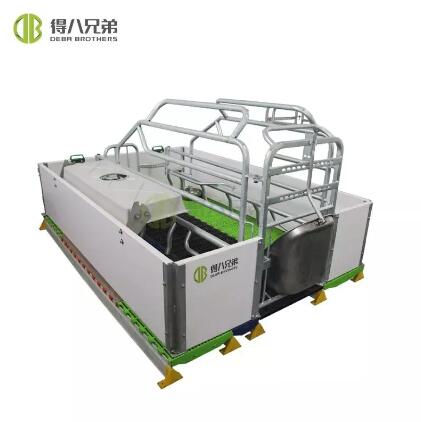Unveiling the Contrasts: European vs. Conventional Farrowing Crates for Sow Comfort and Piglet Safety
2024-02-22
In the dynamic landscape of pig farming, the design and functionality of farrowing crates play a pivotal role in ensuring the well-being of sows and piglets during the critical farrowing period. As attention shifts towards enhancing animal welfare standards, a comparison between European and conventional farrowing crates illuminates the key differences in their approach to sow comfort and piglet safety. In this blog post, we'll delve into these disparities to gain a deeper understanding of how each type of crate impacts the welfare of sows and piglets.
European Farrowing Crates: Prioritizing Comfort and Welfare
European-style farrowing crates are characterized by their innovative design features aimed at maximizing sow comfort and piglet safety. Here's how they stand out:
1. Ample Space: European crates typically offer more space for sows to move around, lie down, and exhibit natural behaviors. This extra room reduces the likelihood of discomfort and stress for the sow during farrowing.
2. Adjustable Components: These crates often feature adjustable rails and gates, allowing farmers to customize the crate's dimensions to fit the specific needs of individual sows. This adaptability ensures a snug and secure environment for each sow, minimizing the risk of injuries.
3. Enhanced Flooring: European-style crates may incorporate flooring materials that provide better traction and comfort for sows and piglets. Non-slip surfaces and heated flooring options contribute to a more favorable environment, promoting sow well-being and piglet safety.
4. Enrichment Opportunities: Recognizing the importance of environmental enrichment, European crates may include features such as nesting materials and manipulable objects. These provisions help reduce stress levels in sows and stimulate natural behaviors, contributing to overall welfare.
Conventional Farrowing Crates: A Different Approach
In contrast, conventional farrowing crates, while still widely used in some regions, often have design characteristics that prioritize operational efficiency over sow comfort and piglet safety. Here are some key differences:
1. Limited Space: Conventional crates tend to be more restrictive in terms of space allowance for sows, offering less room for movement and natural behaviors. This confinement can lead to discomfort and increased stress levels for the sow.
2. Fixed Dimensions: Unlike European-style crates, conventional crates typically have fixed dimensions, providing less flexibility in accommodating different sow sizes. This lack of adjustability may result in poorly fitting crates, posing risks to sow welfare.
3. Basic Flooring: The flooring in conventional crates may be less advanced in terms of comfort and safety features. Smooth surfaces without adequate traction can increase the risk of slips and injuries for both sows and piglets.
4. Limited Enrichment: Conventional crates may lack provisions for environmental enrichment, such as nesting material or enrichment devices. Without these stimuli, sows may experience higher levels of stress and boredom during farrowing.
Conclusion: Striving for Welfare Excellence
In the pursuit of enhanced animal welfare, the disparities between European and conventional farrowing crates underscore the importance of design considerations in fostering sow comfort and piglet safety. While conventional crates may prioritize operational efficiency, European-style crates set a higher standard by prioritizing ample space, adjustability, flooring comfort, and enrichment opportunities. As the industry continues to evolve, a shift towards European-style farrowing crates represents a progressive step towards achieving optimal welfare outcomes for sows and piglets alike.



